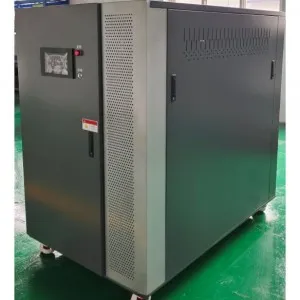12-р сар . 24, 2024 13:09 Back to list
Find Reliable Sand Casting Parts Manufacturer for Quality Components and Solutions
Understanding Sand Casting Parts Manufacturing
Sand casting is a widely-used manufacturing process that involves creating metal parts by pouring molten metal into a mold made of sand. This method is known for its versatility and cost-effectiveness, making it a preferred choice for various industries, from automotive to aerospace. In this article, we will delve into the intricacies of sand casting parts manufacturing, exploring its processes, advantages, applications, and the future of this technique in modern manufacturing.
The Sand Casting Process
The sand casting process begins with the creation of a mold. The mold is typically made from a mixture of sand, clay, and water, which forms a strong and durable base to withstand high temperatures. The manufacturing process can be broken down into several key steps
1. Pattern Making A pattern, which is a replica of the final product, is created, usually from materials like wood, metal, or plastic. The pattern is slightly larger than the desired product to account for metal shrinkage during cooling.
2. Mold Preparation The pattern is placed within a sand mixture to create a mold. The sand is compacted around the pattern to ensure it takes on the desired shape. Once the mold half is formed, the pattern is removed, leaving a cavity that matches the pattern's profile.
3. Core Placement For complex shapes or hollow sections, cores made from sand bonded with a resin or oil are inserted into the mold. Cores help create inner cavities and improve the part's overall design.
4. Melting and Pouring The metal, which can be iron, aluminum, or other alloys, is melted in a furnace at high temperatures. Once molten, it is poured into the mold through predetermined channels.
5. Cooling and Cleaning After pouring, the metal is allowed to cool and solidify within the mold. Once cooled, the mold is broken away to reveal the casting. The casting is then cleaned to remove sand particles and imperfections.
6. Finishing Touches The final stage involves finishing processes such as machining, grinding, or surface treatment to achieve the necessary specifications and surface quality.
Advantages of Sand Casting
Sand casting offers several advantages that contribute to its popularity in the manufacturing sector
sand casting parts manufacturer

- Cost-Effective for Short Runs The lower cost of materials and the ability to produce a variety of part sizes make sand casting economical for short production runs or prototype creations
.- Versatility Sand casting can accommodate a wide range of metals, including ferrous and non-ferrous alloys, and can create parts of various sizes, from small components to large structures.
- Complex Shapes The ability to create intricate designs and complex geometries is a significant advantage of sand casting, allowing engineers and designers greater flexibility.
- Simplicity in Process The overall process is relatively straightforward, requiring less specialized equipment compared to other casting methods, making it accessible for small to medium-sized manufacturers.
Applications of Sand Casting
Sand casting is utilized across various industries due to its adaptability. Key applications include
- Automotive Engine blocks, transmission cases, and other critical components are often sand-cast for durability and strength.
- Aerospace Parts like turbine housings and structural components benefit from the material properties that sand casting can achieve.
- Industrial Equipment Many machines and tools are manufactured using sand casting due to the ability to produce robust and reliable parts.
The Future of Sand Casting
With advancements in technology, sand casting is evolving. The integration of computer-aided design (CAD) and computer-aided manufacturing (CAM) is streamlining the pattern-making and mold-making processes, enhancing precision and reducing lead times. Furthermore, the introduction of 3D printing techniques for mold creation is set to revolutionize the industry by allowing for ultra-complex designs that were previously unattainable.
In conclusion, sand casting remains a vital and dynamic part of the manufacturing landscape. Its longstanding history coupled with modern advancements ensures that it will continue to play a crucial role in producing high-quality, precision-engineered parts for various industries well into the future. As manufacturers embrace new technologies and techniques, sand casting will likely see improvements that enhance its efficiency, reliability, and overall quality.
-
A-Rated Cast Aluminum Boilers: High-Efficiency Condensing Gas & LPG
NewsAug.26,2025
-
OEM Cast Silicon Aluminum Alloy Heat Exchanger | Custom & High Performance
NewsAug.25,2025
-
Centrifugally Cast Iron Water Main Pipe | Ductile Iron Solutions
NewsAug.24,2025
-
Durable Cast Steel Concrete Pipe Mold Bottom Rings & Base Trays
NewsAug.23,2025
-
Centrifugally Cast Iron Water Main Pipe for Reliable Mains
NewsAug.22,2025
-
Durable Centrifugally Cast Iron Water Main Pipe
NewsAug.11,2025


